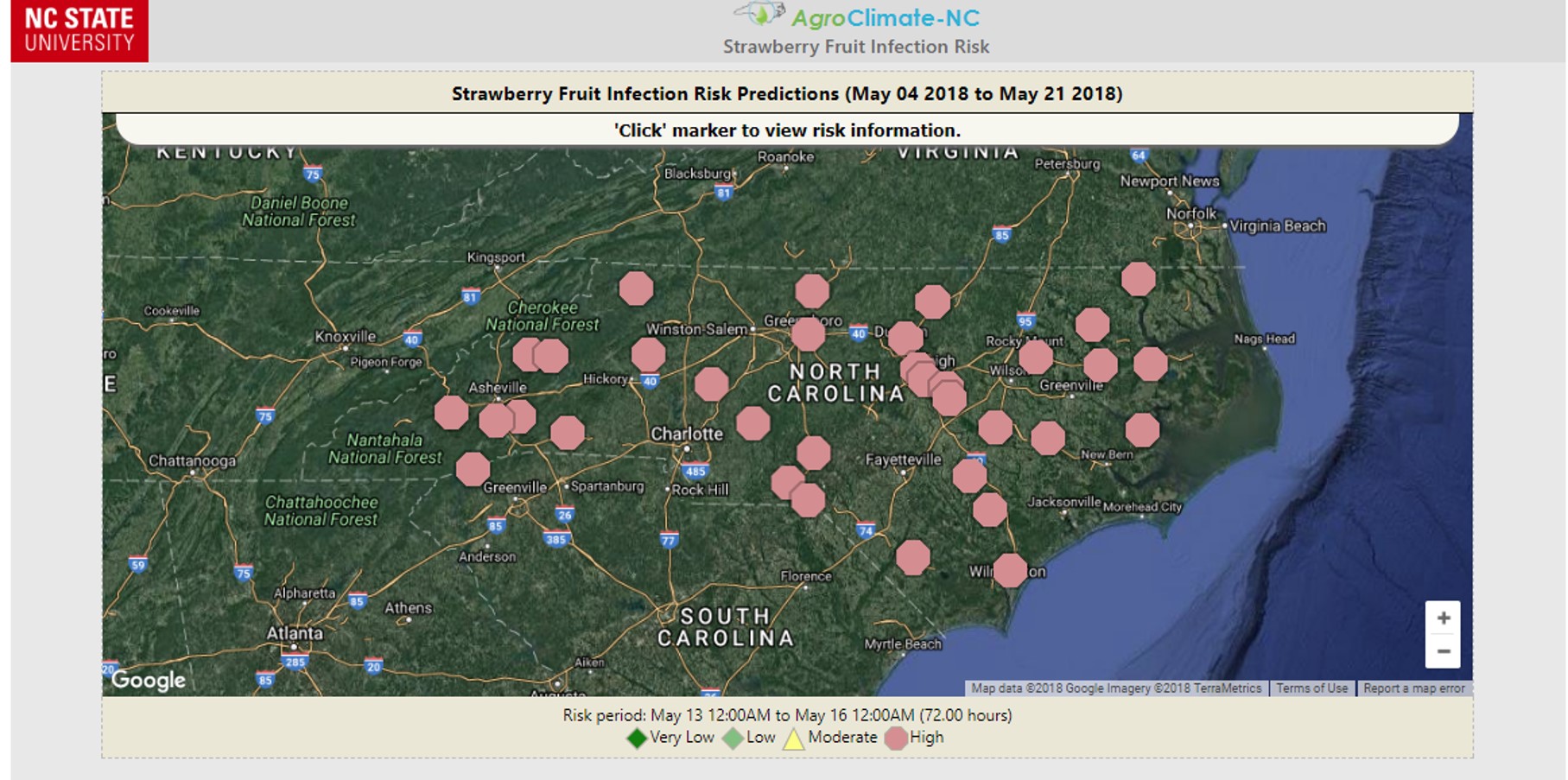Major Strawberry Fruit Rot Risk Expected May 15, 2018
go.ncsu.edu/readext?527718
en Español / em Português
El inglés es el idioma de control de esta página. En la medida en que haya algún conflicto entre la traducción al inglés y la traducción, el inglés prevalece.
Al hacer clic en el enlace de traducción se activa un servicio de traducción gratuito para convertir la página al español. Al igual que con cualquier traducción por Internet, la conversión no es sensible al contexto y puede que no traduzca el texto en su significado original. NC State Extension no garantiza la exactitud del texto traducido. Por favor, tenga en cuenta que algunas aplicaciones y/o servicios pueden no funcionar como se espera cuando se traducen.
Português
Inglês é o idioma de controle desta página. Na medida que haja algum conflito entre o texto original em Inglês e a tradução, o Inglês prevalece.
Ao clicar no link de tradução, um serviço gratuito de tradução será ativado para converter a página para o Português. Como em qualquer tradução pela internet, a conversão não é sensivel ao contexto e pode não ocorrer a tradução para o significado orginal. O serviço de Extensão da Carolina do Norte (NC State Extension) não garante a exatidão do texto traduzido. Por favor, observe que algumas funções ou serviços podem não funcionar como esperado após a tradução.
English
English is the controlling language of this page. To the extent there is any conflict between the English text and the translation, English controls.
Clicking on the translation link activates a free translation service to convert the page to Spanish. As with any Internet translation, the conversion is not context-sensitive and may not translate the text to its original meaning. NC State Extension does not guarantee the accuracy of the translated text. Please note that some applications and/or services may not function as expected when translated.
Collapse ▲Beginning May 15, in the early afternoon in Western NC and late evening in Eastern NC, the strawberry decision support tool is predicting high-risk conditions that favor both Anthracnose Fruit Rot (AFR) and Botrytis Fruit Rot (BFR) pressure for several days.
In the mountains, there has been no (modeled) risk of disease for more than 12 days and in the east the last risk period was around May 7 (for BFR). Therefore, rowers are advised to implement management steps within the next 24-36 hours if no products have been applied in the last 5-7 days. The pages that support the strawberry decision support tool also have links to the most up-to-date recommendations to manage BFR and AFR with regard to the best products and best rotation programs.
About 90% of BFR infections occur through the flower and it takes 24-30 days for the flower to develop into a harvestable berry. Therefore, the decision to spray for BFR depends on the predicted conditions this week PLUS the expected length of harvest. If harvest will end early June, then this predicted time of risk is not concerning. (Note: infected berries are likely to show symptoms during this coming week of wet conditions but they were most likely infected 26 days ago).
If growers have not observed anthracnose to date, then the risk of AFR is very low. We have experienced high pressure in our research plots the last two weeks (in plots not sprayed). We also experienced a very low volume of samples in the Plant Disease Clinic with anthracnose problems. Therefore, AFR risk is low in most fields. However, the risk of AFR cannot be guaranteed to be zero and the conditions this week are highly favorable for disease spread.

State Wide View of disease risk starting May 15 2018 for both Anthracnose fruit rot and Botrytis fruit rot.




